 |
 |
 |
| |
Biomarkers Good at Predicting NAFLD or Excluding Advanced Fibrosis With HIV (FibroScan, CAP Score)
|
| |
| |
10th IAS Conference on HIV Science (IAS 2019), July 21-24, 2019, Mexico City
Mark Mascolini
Serologic biomarkers proved good predictors of nonalcoholic fatty liver disease (NAFLD) in people with HIV monoinfection, while other markers reliably excluded advanced fibrosis [1]. This Brazilian analysis benefited from a large study sample, use of a central lab for blood measures, and FibroScan by a single operator on the same day as blood sampling.
Researchers from Brazil's National Institute of Infectious Diseases and the Oswaldo Cruz Foundation listed several recent studies that establish high rates of steatosis and liver fibrosis in people with HIV [2-4], including those without hepatitis virus infection. Verifying reliable serologic biomarkers when liver biopsy or MRI is not possible would promote the understanding of NAFLD and advanced fibrosis (METAVIR F3/F4) in people with HIV and enhance care of affected individuals.
The Brazilian team noted four biomarkers for detecting NAFLD: Fatty Liver Index (FLI), NAFLD-Liver Fat Score (NAFLD-LFS), Hepatic Steatosis Index (HSI), and Steato-ELSA. Three markers have received attention for detecting advanced fibrosis: Aspartate-to-Platelet Ratio Index (APRI), Fibrosis-4 score (FIB-4), and NAFLD Fibrosis Score (NFS).
This biomarker evaluation involved a cross-sectional analysis of people in the PROSPEC-HIV study [5]. The analysis included only people with HIV and excluded those with viral hepatitis, alcohol abuse (AUDIT score above 8), missing data for serologic markers, or unreliable transient elastography (FibroScan). With the study participant fasting, clinical evaluation, blood sampling, and FibroScan were performed on the same day. Outcomes were (1) NAFLD (CAP [Controlled Attenuation Parameter] >/= 248 dB/m in reliable CAP measures and (2) liver fibrosis (LSM [Liver Stiffness Measurement] >/= 8.7 kPa/7.2 kPa in reliable LSM.
Among 674 people in PROSPEC-HIV, 437 met entry criteria for this analysis, of whom 167 (38%) had NAFLD and 46 (10.5%) had advanced fibrosis. Median age of participants stood at 44 years, 57% were women, 52% had black or mixed skin color, and 42% were current or former smokers. Almost all participants, 96%, took antiretroviral therapy, 82% had a viral load below 40 copies, and median CD4 count stood at 620.
Fatty Liver Index (FLI), NAFLD-Liver Fat Score (NAFLD-LFS), Hepatic Steatosis Index (HSI), and Steato-ELSA were all significantly higher in people with than without NAFLD (CAP >/= 248) (P < 0.001 for all). Area under the receiver operating characteristic curve (AUROC) for detecting NAFLD was high for all four biomarkers: 0.854 for Steato-ELSA, 0.840 for FLI, 0.805 for HSI, and 0.793 for NAFLD-LFS. Steato-ELSA at or above 0.386 had reasonably balanced sensitivity and specificity for detecting NAFLD (81% and 74%), as did FLI at or above 60 (75% and 76%).
AUROC for detecting advanced fibrosis (METAVIR F3/F4) was also high for each of the three biomarkers assessed: 0.7950 for NAFLD-Fibrosis Score, 0.736 for FIB-4, and 0.700 for APRI. Specificity and negative predictive value were high for FIB-4 at or above 3.25 (99% and 90%), APRI at or above 1.5 (99% and 90%), and NAFLD-Fibrosis Score at or above 0.676 (98% and 90%).
The investigators concluded that serologic biomarkers (especially FLI and Steato-ELSA) had good accuracy in detecting NAFLD, while all three markers assessed had high specificity and negative predictive value for advanced fibrosis. They proposed that clinicians should integrate these tests into HIV care to detect NAFLD and rule out advanced liver fibrosis.
Working with the same antiretroviral-treated HIV population, these researchers recently published findings on factors predicting liver fibrosis and steatosis by transient elastography [6].
References
1. Yanavich C, Pacheco A, Cardoso SW, et al. Validation of serological biomarkers for detection of non-alcoholic fatty liver disease (NAFLD) and/or advanced liver fibrosis in people living with HIV. 10th IAS Conference on HIV Science (IAS 2019), July 21-24, 2019, Mexico City. Abstract MOAB0203.
2. van Welzen BJ, Mudrikova T, El Idrissi A, Hoepelman AIM, Arend JE. A review of non-alcoholic fatty liver disease in HIV-infected patients: the next big thing? Infect Dis Ther. 2019;8:33-50. www.natap.org/2019/HIV/40121_2018_Article_229.pdf
3. Rockstroh JK. Non-alcoholic fatty liver disease (NAFLD) and non-alcoholic steatohepatitis (NASH) in HIV. Curr HIV/AIDS Rep. 2017;14:47-53.
4. Verna EC. Non-alcoholic fatty liver disease and non-alcoholic steatohepatitis in patients with HIV. Lancet Gastroenterol Hepatol. 2017;2:211-223.
5. ClinicalTrial.gov. Prospective Evaluation of HIV Patients Using Non-invasive Methods for Estimation of Liver Fibrosis and Steatosis (PROSPEC-HIV). ClinicalTrials.gov identifier NCT02542020.
6. Perazzo H, Cardoso SW, Yanavich C, et al. Predictive factors associated with liver fibrosis and steatosis by transient elastography in patients with HIV mono‐infection under long‐term combined antiretroviral therapy. J Int AIDS Soc. 2018;21:e25201. https://www.ncbi.nlm.nih.gov/pmc/articles/PMC6216177/
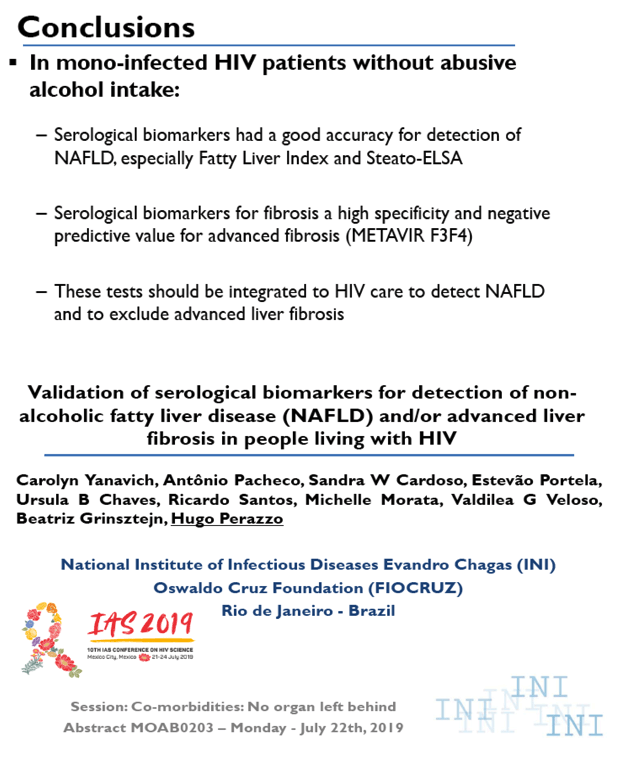
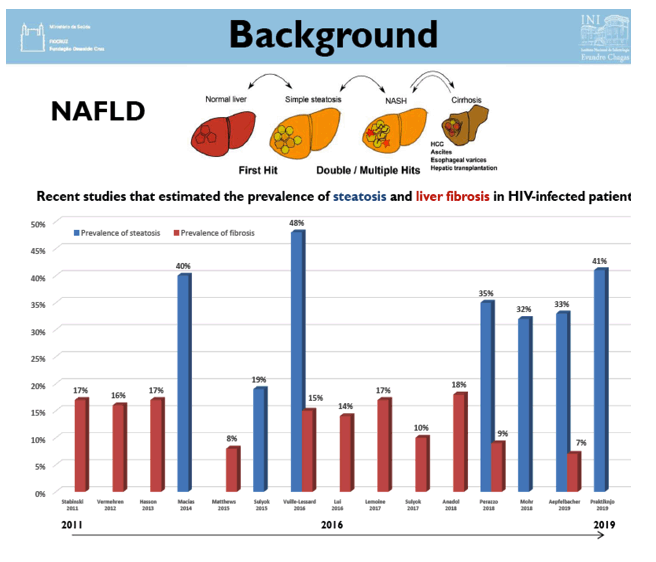
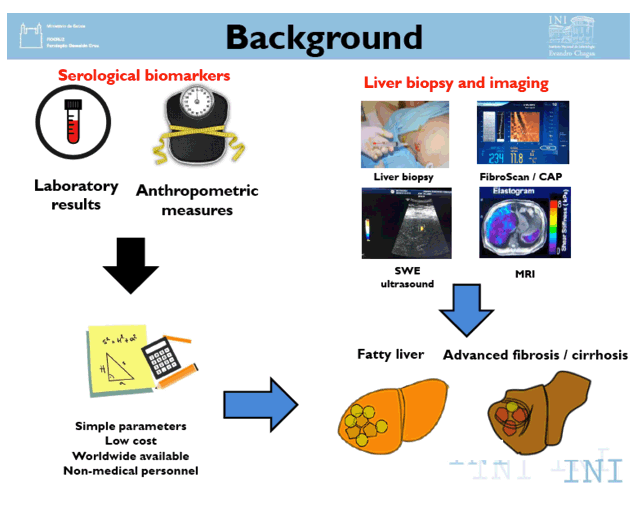
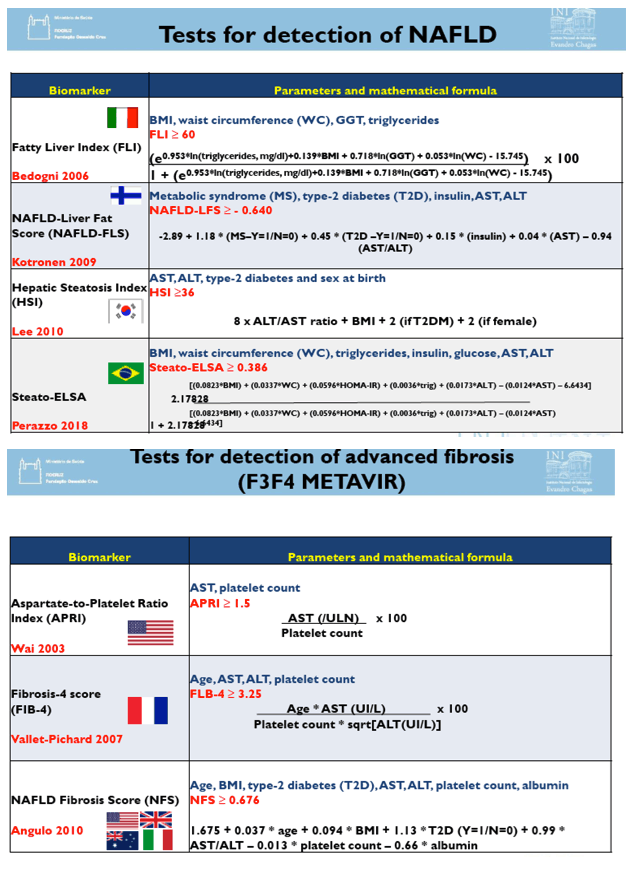
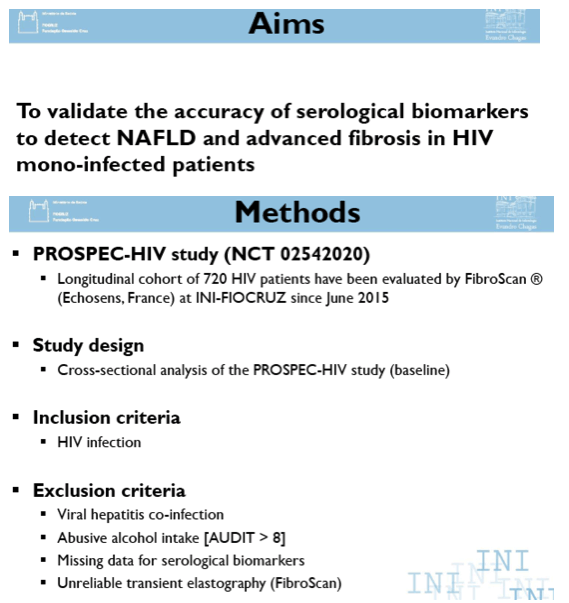
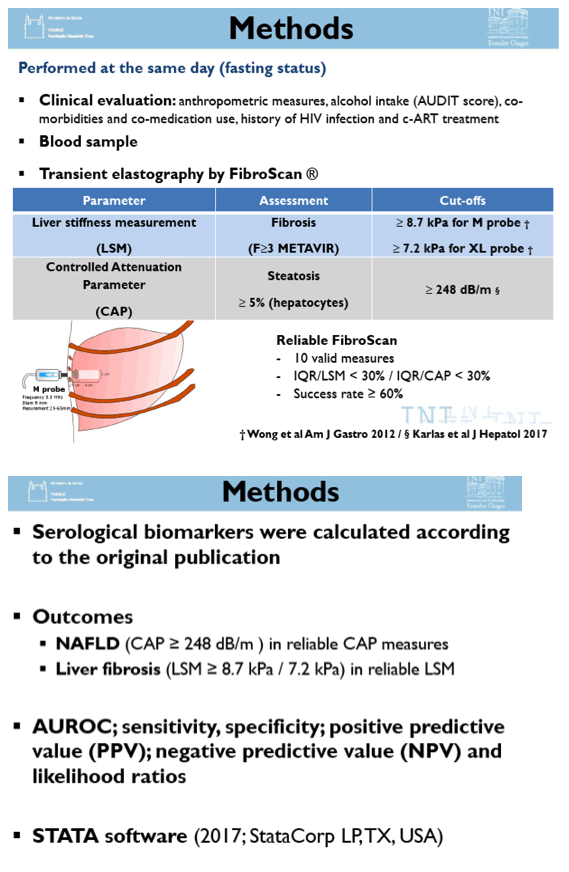
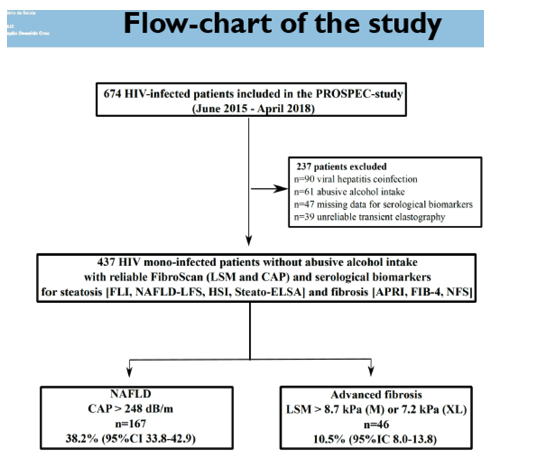
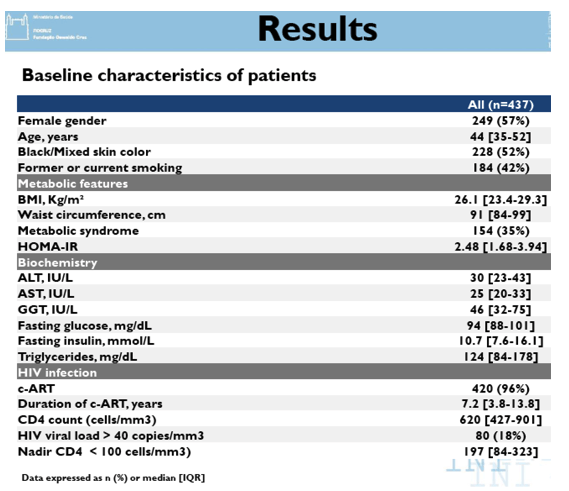
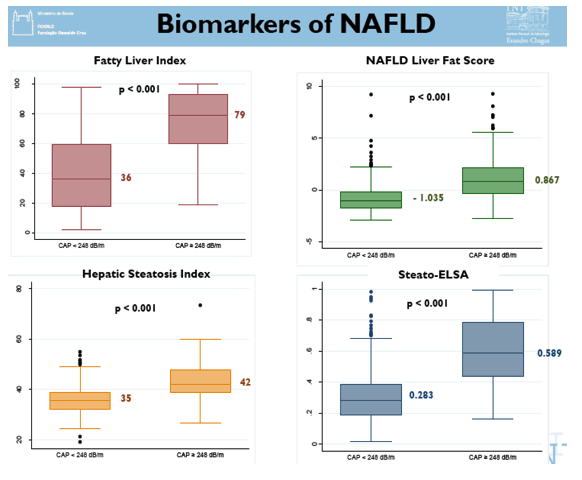
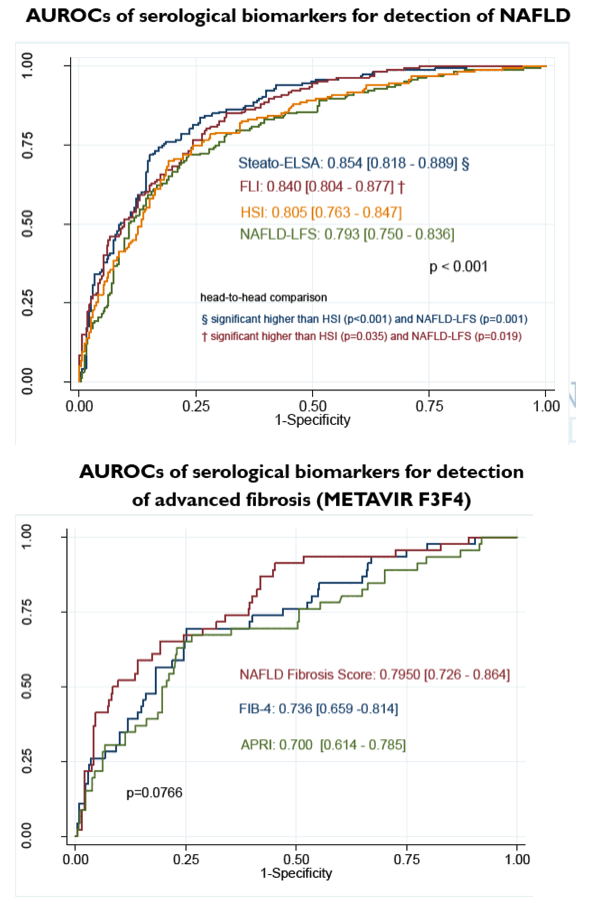
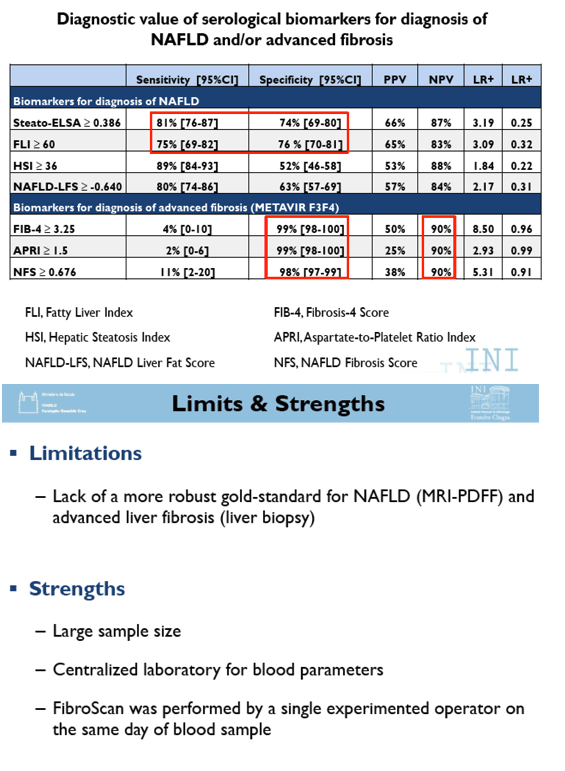
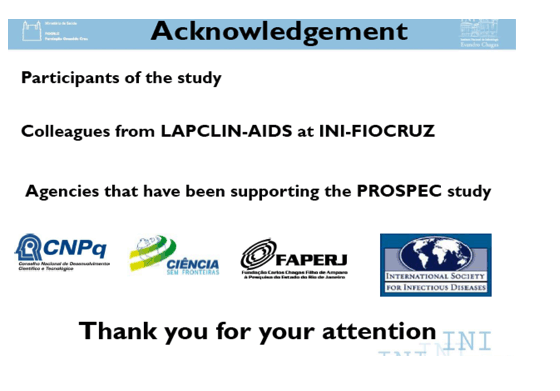
|
| |
|
 |
 |
|
|